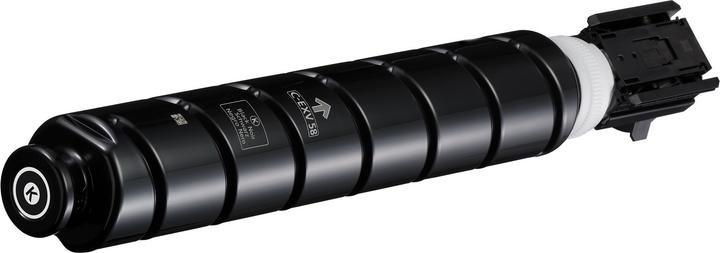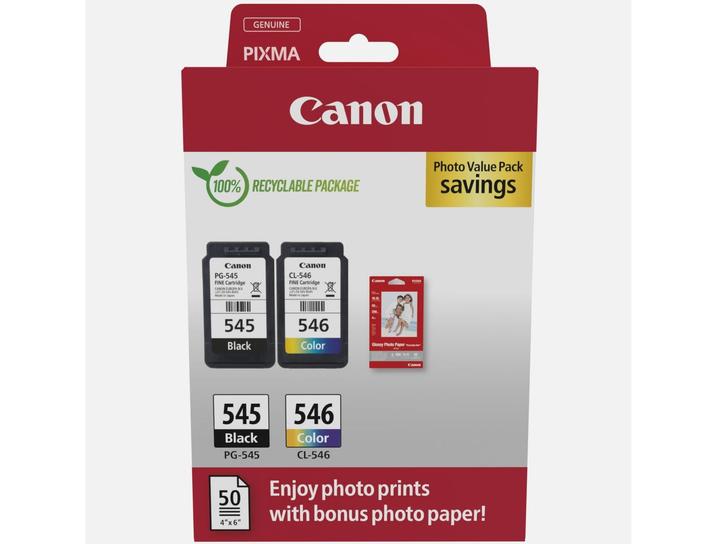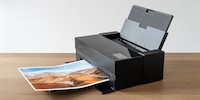

Chip shortage prompts Canon to remove DRM – but only on office printers
Toner cartridges from Canon are now being supplied without digital copy protection. The ongoing semiconductor chip shortage is the reason for this. But what looks like a service to the public could be a clever move to maximise profits.
Insert a third-party toner cartridge into your Canon printer, and you’ll be greeted with an error message beginning with the words «cartridge not detected». The printer claims that the toner level can’t be detected. This error could be fixed by inserting an original Canon product.
There’s one problem: the ongoing semiconductor crisis. For weeks now, it has rendered the printer manufacturer unable to produce the chips used to verify the authenticity of its own cartridges. For this reason, newer cartridges are being shipped without these chips. As these cartridges can’t be verified by the printer, Canon Germany has published instructions for bypassing this mechanism (in German). The kicker: this means that you can now also use third-party toners with your printer. While not the intent of the manual, Canon’s hands appear to be tied.
With that, Digital Rights Management (DRM) on Canon office printers is history. At least for now.
Devices that can be freed from DRM
The first devices on which DRM can be removed are those in the ImageRunner series. These are large devices that are used mainly in offices.
- Canon imageRUNNER 1435i/1435iF
- Canon imageRUNNER 2625i/2630i/2645i
- Canon imageRUNNER ADVANCE 4525i/4535i/4545i/4551i, II und III
- Canon imageRUNNER ADVANCE C250i/350i/C351iF
- Canon imageRUNNER ADVANCE C255i/C355i/C355iF/C256i/356i
- Canon imageRUNNER ADVANCE C256i/356i II and III
- Canon imageRUNNER ADVANCE C3320i/3325i/3330i
- Canon imageRUNNER ADVANCE C3520i/3525i/3530i, II and III
- Canon imageRUNNER ADVANCE C5535i/5540i/5550i/5560i, II and III
- Canon imageRUNNER ADVANCE DX 4725i/4735i/4745i/4751i
- Canon imageRUNNER ADVANCE DX 6000i
- Canon imageRUNNER ADVANCE DX C257i/C357i
- Canon imageRUNNER ADVANCE DX C3720i/3725i/3730i
- Canon imageRUNNER ADVANCE DX C3822i/3826i/3830i/3835i
- Canon imageRUNNER ADVANCE DX C5735i/5740i/5750i/5760i
- Canon imageRUNNER C1325iF/1335iF
- Canon imageRUNNER C3025i
- Canon imageRUNNER C3125i
- Canon imageRUNNER C3226i
Bypassing the DRM is easy: when the error message appears on the ImageRunner display, simply press «OK», «Continue» or «Agree».
Why should you do this?
Ink and toner cartridges are expensive. Printers, on the other hand, are cheap. Printer manufacturers like Canon don’t make their big bucks off the actual devices; profits arise from the sales of ink cartridges, or toner cartridges for laser printing. And these are expensive.
Here’s an example: a toner cartridge for a Canon ImageRunner Advance costs between 180 and 330 Swiss francs, depending on the colour.
So far, DRM has made the use of third-party cartridges unattractive or even impossible. As a result, an auxiliary industry has formed which sells toner, as in the powder inside the cartridge. A quick search returns an offer from Thinkshop.ch, where you can purchase toner for 116.50 francs. You’ll just have to refill the cartridge yourself.
Why manufacturers don’t want this
Third-party replacement cartridges and toners have been on the market for years and exist in the shadow of major printer manufacturers. In many cases, they offer the same print quality at lower prices. If not for DRM locks, you could buy a cheap printer and refill it with cheap ink or toner. That’s why the industry as a whole – not just Canon – developed DRM in the first place. The printer requires the ink or toner cartridge to identify itself; otherwise certain features won’t work. In Canon’s case, remaining toner levels aren’t displayed. While it’s possible that the toner levels can only be measured by the DRM chip, it could also be that the printer’s software simply refuses to output the readings unless a DRM chip is detected.
Similar mechanisms can be found in video games, music, and all sorts of apps; they make economic sense. If a manufacturer can bind its customers with the mechanism of «you must purchase our consumables for the device to work», then the device can be sold at a lower price, and the consumables at a higher one.
Here’s an example with Canon:
The printer costs you 60 francs. Bought separately, the refill cartridges cost you 40 francs. As a set, the colour and black cartridges cost just 30 francs. And that’s still half the purchase price of the entire printer. Refill ink – including Canon-brand ink – is available at speciality stores. Refill instructions can be found online.
Why only office printers are freed from DRM
Canon, just like any other company committed to profit, doesn’t want to lose customers. On the contrary, customers should ideally be tied to the company forever. DRM is a powerful means to achieve this goal.
And this is precisely why the likelihood is high that only business printers can be freed from DRM prison. Companies will typically have a contractual relationship with Canon. When the toner runs out, the printer notifies Canon; Canon then dispatches a new toner, which arrives at the company’s mailbox the very next day. In other words, companies don’t have to worry about sourcing toner, because Canon already supplies them with it. Hence, Canon doesn’t have to worry about toner sales and can afford to omit the DRM chips.
While the subscription service is also available for private customers, it’s unlikely to be widespread.
The one thing worrying Canon are the error messages that may pop up on the printers. The result is annoyed customers and a potential burden on customer service.
A book tip to wrap things up
If you want a good and entertaining example on the topic of DRM, I recommend the short story collection «Radicalized» by Cory Doctorow. It’s available as a DRM-infested eBook on Amazon. Or you can opt for the DRM-free version on the author’s website.
Journalist. Author. Hacker. A storyteller searching for boundaries, secrets and taboos – putting the world to paper. Not because I can but because I can’t not.
Interesting facts about products, behind-the-scenes looks at manufacturers and deep-dives on interesting people.
Show all







